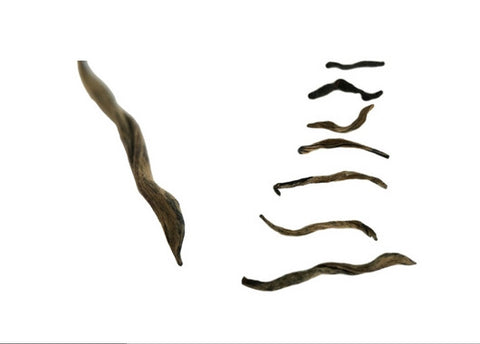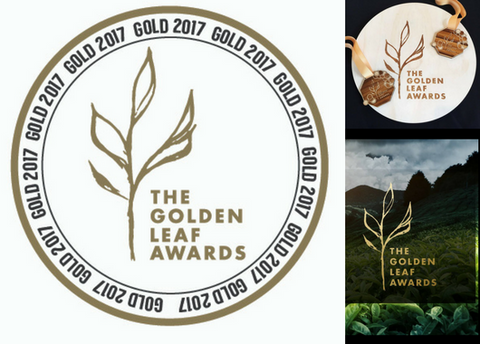Houjicha - green tea
$3.95

| Style | Green Tea | |
| Origin | Nakayama Village near Fujieda City, in Shizuoka Japan | |
| Season | Autumn 2014 | |
| Altitude | 350m | |
| Batch | TJH1 | |
| Plant | Camellia sinensis sinensis, Yabukita varietal | |
| Tea Master | Master Kinezuka |
Houjicha (also written hojicha) is a low caffeine, roasted Japanese green tea made from the Kinezuka's premium leaves. It achieves a level of quality uncommon for this style. It has excellent endurance with sweet, mellow top notes and savoury undertones reminiscent of salted caramel, fresh roasted nuts and warm toast.

 |
80 degrees Celsius | |
 |
1 x tablespoon (3 grams) | |
 |
150 ml water (small tea cup) |
|
 |
Infuse for 2 minutes |
The Stories We Drink
|
Houjicha is a roasted green tea, unique because most other Japanese teas are steamed. The Kinezuka’s houjicha is grown on the family’s all-natural, organic farm in a small village called Nakayama. The garden is in the mountains behind the city of Fujieda. Organic farming is rare in Japan and the Kinezuka’s are held in high esteem for their commitment to pesticide free agriculture. For years the Kinezuka’s have produced various styles of tea, though during the winter months when the tea plants are dormant, the family shifts its focus to their tangerine trees which are harvested during the colder months. The Kinezuka family advocate harmony between people, agriculture and nature. This is reflected throughout their garden and approach to tea. Their passion has resulted in a small organic tea movement in the Fujieda area with more than 20 other gardens and farms adopting the Kinezuka’s agriculture principles and advanced cultivation techniques with the goal of creating a much larger macro environment that makes the need for pesticides obsolete. Most Japanese houjicha is made with poorer quality, unsorted leaf material from the tail end of the harvesting season. The Kinezukas use premium leaf material instead and, thanks to their excellence in organic agriculture, the results are marked. This houjicha is a sweeter tea with much more endurance in the steepings thanks to the superior grade leaf. Dry houjicha leaves are brown in colour, despite it being a green tea. This is because of the roasting process. Once infused, the liquor has a very distinct reddish-brown appearance, again, very different from other Japanese greens. The disparities continue on the palate. Houjicha has aromatic toasted nut flavours with a hint of caramel sweetness and barely any tannic bitterness. This is in stark contrast to the vegetal, mineral and seaweed flavours that characterise the majority of Japanese teas. Houjicha is lower in caffeine than most teas, both as a result of the high heat roasting and the fact that the leaves used are generally large and from lower down the tea bush – the top tips and young shoots of a plant tend to have the highest concentration of caffeine. Houjicha is often used to aid digestion and quench thirst because of its low tannin levels and limited astringency. It is a great base for a cold brew tea. It also pairs well with food, beautifully complementing rich flavours. You can learn more about the Kinezuka's and houjicha here. |
|
Craftsmanship






















